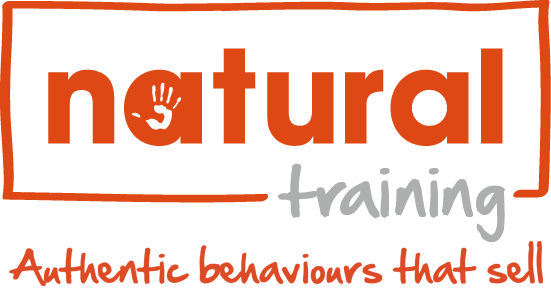Insight Selling: Our 3 Step Process
Today, the most effective salespeople offer unique insight to customers that help to drive their business and offer them value.
Think about one of your friends who might be a ‘go-to’ person – a really great problem solver. A natural problem solver is able to clearly think something through, ask the right questions, get a clear handle on the nature of the problem, identify opportunities, go beyond a rigid mindset to open up new ways of thinking and is not afraid to have opinions and share them.
These days, the sellers who stand head and shoulders above the crowd and are winning opportunity after opportunity have a lot in common with these types of people. That’s because great salespeople are using insights to sell.
Insight Selling Training
Learn more about our Insight Sales training programme.
What is Insight Selling?
Insight selling is an approach that reframes a customer’s thinking and drives them towards a seller’s solutions. And it is essential if you want to differentiate yourself from your competitors.
We define it as a type of selling that naturally bakes understanding into a conversation, designed to provoke customers to sit up and take action. It is about being perceptive and providing a point of view, data, information or experience that helps the prospect to see things differently. This change in perception could be something as small as a simple realisation or connecting a couple of dots, to a 1000-watt flashing light bulb eureka moment. Either way it moves them to do something that results in a closer alignment between their needs and the seller’s solution, and ultimately a sale. And it’s done in such a way as not to appear forced, or rigid.
As always, it’s authentic human conversations that sell.
Changing Customer behaviour
You probably know that the rules of selling have changed: customers are more than 50% of the way through their purchasing process before they even consider making contact. When they do, they are armed to the teeth with information and a deep understanding of their problem and possible solutions.
When you are selling with insights you are identifying gaps in a customer’s thinking and providing new ideas and awareness that educates and inspires them. Best of all it doesn’t have to take a lot of time and effort to develop insight. Insight can be gained from all the clues around you – their website, the customer’s social media presence, the new products they launch to the markets they serve. Check out their company report, their press releases and any company information shared by employees on LinkedIn. It’s not hard to spot an initiative, and link their agenda with something that you might bring to the table.
Insight Selling vs Consultative Selling
When we run our Insight Selling training programme, we sometimes get asked the question; “Does this mean we have to ditch our consultative selling approach that has worked so well for us in recent years?” The answer to that is “No”. Although the two forms of selling are different, they are not mutually exclusive. In fact, they complement each other perfectly.
A Powerful Combination
In consultative selling the salesperson asks thought provoking and probing questions designed to uncover information that helps them build solutions (“I ask you, you advise me”). The term was first coined by Mack Hanan in his 1970 tome Consultative Selling: The Hanan Formula for High Margin Sales at High Levels.
With insight selling the salesperson takes more control of where the conversation is going – but not in a pushy way – by bringing new information, facts and data to the table (“I advise you, you ask me”) that will help the other person.
When used together, consultative selling and insight selling are a powerful and winning combination. What you will see during conversations with your clients is a to-ing and fro-ing of questions and answers, where you are giving your views and educating them. This is no ordinary sales chat, but a rich and meaningful conversation with debate and opinions. You will also notice another thing taking place, and that is, when you provide the other person with insights, they’ll give you insights in return. This allows you to probe ever deeper into the client’s concerns to discover their pain points and what it is that keeps them up at night. In this way you are truly able to furnish them with solutions that resonate.
So, just how do you sell with insight?
At Natural Training, we like to keep things simple. We see no reason to over complicate sales, which is why we have developed a simple three-stage insight selling tool. It is easy to follow, memorable and above all it works. The approach hinges on three fundamental questions: WHO? WHAT? HOW?
1) WHO
It all starts with the WHO? Ask yourself who you are really talking to. This isn’t simply a case of knowing what their job title is or which department they work for, but finding out all about them, doing as much research as you can before you make an approach.
You probably already know the maxim that companies don’t buy, people do and selling with insights involves knowing all about your prospect and what is important to them. How long have they been in the role? What are their career aspirations? What does success look like to them? What do they care about, or value? What are they sensitive to? (e.g. price, quality, quick turnaround times and so on). There are so many tools at your disposal to help you do this. One of best is the person’s LinkedIn profile.
This is great for biographical information, but it will also reveal the groups they are a member of. There, you may see the person has posted comments or questions about issues and challenges they need resolved. This kind of information is like gold dust when you are profiling a prospect, because it will form the basis of the insights that you are going to deliver. What you are doing is building up a detailed picture of what matters to them, their motivations, concerns and what makes them tick.
2) WHAT?
Then you’ve got to work out how to use this information to provide insights. So, we move onto the next stage of the process and that is the WHAT? While it is important to understand the buyer’s needs and show how your solutions meets those needs, this is not enough. You need to be able to create an ‘aha’ moment that reveals something new to the other person. You really are bringing something new to the table, looking for patterns they are not seeing.
Basically, you are saying to the seller: “I’ve got this new idea or approach that I think will be very exciting for your company. Let’s talk about it.” It is up to you the seller to introduce these insights into the conversation in a proactive and collaborative way, such that they make the buyer say something like: “Wow, that’s very interesting. I didn’t know that, but I can see how it is going to make a great difference to us.”
3) HOW?
The final stage is the HOW? How are you going to bake these insights naturally into the conversation? The answer is to raise points in an intriguing and powerful way that will pique their interest. For example, let’s say you are a vendor of cyber security solutions. Perhaps you could say: “Today, a sophisticated cyber-attacker might target a specific individual in your finance department with an email which refers to a named supplier. Some will even follow up with a phone call to make sure that the individual has opened and acted on the email. It is no longer enough to rely on spam filters to stop these attacks – a higher level of protection is now required if you want to keep your business safe.”
It is important that you are not overtly self-promotional. Consider bringing in third party studies, reports or industry analysis that will help you to provide insights.
Insights Deliver Results
The key point with insight selling is that the insights must be new. They can’t just be anything that’s tried and tested. You should be breaking new ground and leading your prospect to somewhere they have never been before, a place that is going to reap benefits for them. You are helping your client to think out of the box with ideas that nobody else has thought of.
Einstein was on the money when he said: “Insanity is doing the same thing over and over again and expecting a different result.”
Therefore, be new and insightful and help clients make changes that deliver better results.
If you’d like to hear more about how our Insight Selling training programmes have impacted sales for our clients, please get in touch. We’d love to share that information with you.
Got a comment?
Catch us on Social Media and join the discussion!


